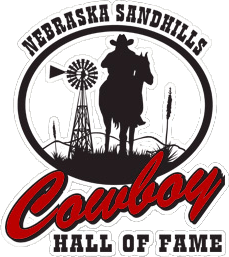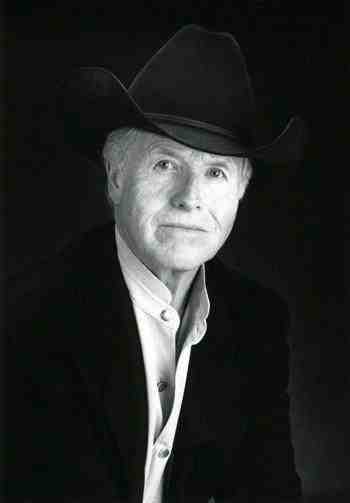November 1, 1937
Herb was born on November 1st, 1937, to Melvin and Ruth Mignery, in Bartlett, Nebraska. Herb has two sisters, Maita and Marta. Herb married Sherry Shavlik and has two daughters, Chantel and Darcy. Raised on the Mignery ranch near Bartlett, he is from a family who has ranched for over 100 years. It was assumed he would be a cowboy, but his love of art led him to illustration, both in the army and later in commercial art. In 1973, he cast his first bronze and from that time devoted himself to sculpture. He is a member of the Cowboy Artists of America.
Best known for his sculpture, his early life centered around his father’s and brother’s ranch in the Nebraska Sandhills. His memories of that ranch are brought to life in his sculpture of the authentic, colorful and diverse people who populate the rural American West. They are the unglamorous individuals rarely seen in Hollywood westerns: a big-knuckled farmer sowing seed, a heavy-set woman digging potatoes, a boy preacher traveling on horseback, a wiry cowboy falling off his frightened horse.
In Mignery’s view, the common people of the American West have never been the stereotypical cowboys in white hats with roaring six-guns or Indians in war bonnets riding into the sunset. “The true West was better and far more interesting than that. The people who composed the West were people who worked hard, who created a country, and who raised children who contributed something to society,” says Mignery. “They didn’t dress fancy and weren’t exceptionally pretty people, necessarily, but I see so much character and flavor in them. The older you get, the more you start looking for subtleties in life and art.”
Although Mignery characterizes his subject matter as Western Americana, encompassing farmers, school teachers, horses, sheepherders, immigrants, gardeners, American Indians and more, he also expresses his spiritual beliefs with religious themes. These works use classical European styles to depict such subjects as St. Michael battling Satan, St. Patrick and the Madonna. Occasionally, Mignery has integrated the two directions by taking a traditional, classical European approach to his Western subject matter.
Mignery’s award-winning career includes a long list of public monuments done for cities (including a bronze statue located at the Wheeler County Courthouse), collectors and institutions across the nation. He is also a popular cartoonist, and his comic cowboy cartoons have appeared regularly in Western Horseman magazine since 1985. He has illustrated books, and his art has appeared on calendars, greeting cards, prints, posters and T-shirts.
Elected to the National Sculpture Society in 1996, Mignery has also served on its Board of Directors, as well as serving as president of the Cowboy Artists of America from 1992-1993 and is a founding member of Cowboy Cartoonists International. “I love diversity and haven’t wanted to restrict myself to one theme,” he explains. “One of my goals in life, as a chronicler, is to tell the story of people like those I grew up with,” says Herb. “I see myself as a vehicle to let their stories be known. I also want to show the world that the cowboy is not dead. There are cowboys today, just like there were cowboys yesterday.”
Mignery has won numerous awards, including the Best of Show and the Western Art Associates Kieckhefer Award at the Cowboy Artists of America Show in Phoenix, Arizona, the Norris Foundation Award at the Autry Museum in Los Angeles, and the Leonard J. Meiselman Memorial Award for sculpture at the National Sculpture Society in New York.

